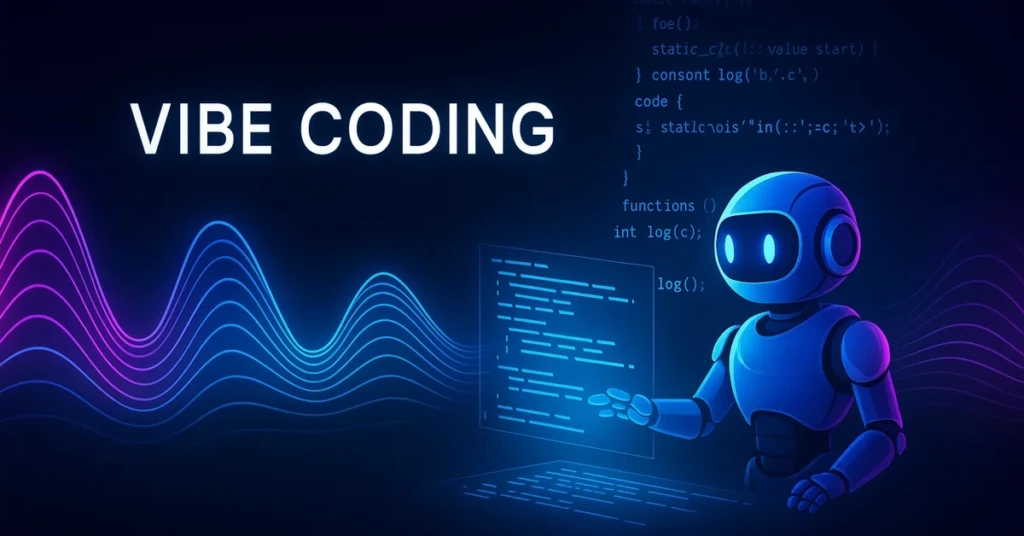Vibe coding is an innovative approach to software development that leverages artificial intelligence (AI) to transform natural language descriptions into functional code. Coined by AI expert Andrej Karpathy in early 2025, the term encapsulates a paradigm shift where developers articulate their intentions in plain language, and AI systems generate the corresponding code. This method democratizes software creation, allowing individuals without traditional programming skills to build applications, websites, and tools.
The Genesis of Vibe Coding
The concept of vibe coding emerged from the increasing capabilities of large language models (LLMs) like OpenAI’s GPT series, Claude, and Google’s Gemini. These models, trained on vast datasets, can understand and generate human-like text, making them suitable for interpreting natural language prompts and converting them into executable code. Karpathy’s introduction of the term highlighted a shift from traditional, syntax-heavy programming to a more intuitive, conversational approach.
How Vibe Coding Works
In a typical vibe coding workflow, a user provides a high-level description of the desired application or feature. For instance, one might instruct an AI, “Create a to-do list app with a dark mode.” The AI then interprets this prompt, generates the necessary code, and presents it to the user. The user can interact with the application, provide feedback, and request modifications, creating an iterative development process driven by natural language interactions.
This approach contrasts with traditional coding, where developers write and debug code manually. Vibe coding emphasizes rapid prototyping, accessibility, and collaboration between humans and AI systems
Tools Empowering Vibe Coding
Several AI-powered platforms have emerged to facilitate vibe coding:
- Claude by Anthropic: Demonstrated its capabilities by enabling users to build nine distinct websites in under an hour through simple prompts.
- Replit: Offers an AI agent that assists in code generation and debugging, streamlining the development process.
- Cursor AI: Provides an integrated development environment with AI assistance, enhancing coding efficiency.
- GitHub Copilot: Assists developers by suggesting code snippets and functions based on natural language comments.
These tools exemplify the shift towards AI-assisted development, making coding more accessible and efficient.
Advantages of Vibe Coding
- Accessibility: Individuals without formal programming education can create functional applications, broadening the pool of potential developers.
- Efficiency: Rapid prototyping and iterative development processes accelerate the creation of software solutions.
- Collaboration: Facilitates collaboration between technical and non-technical team members, enhancing communication and project outcomes.
- Innovation: Encourages experimentation and creativity, as users can quickly test and modify ideas without deep technical knowledge.
Challenges and Considerations
Despite its advantages, vibe coding presents several challenges:
- Code Quality and Security: AI-generated code may contain vulnerabilities or inefficiencies, necessitating thorough testing and review.
- Dependence on AI: Over-reliance on AI tools can lead to a decline in traditional coding skills among developers.
- Intellectual Property: Determining ownership of AI-generated code can be complex, raising legal and ethical questions.
- Misuse: Malicious actors could exploit AI-generated code for harmful purposes, highlighting the need for robust security measures.
Addressing these challenges requires a balanced approach that combines the strengths of AI with traditional software engineering practices.
The Future of Vibe Coding
The trajectory of vibe coding suggests a future where AI plays an integral role in software development:
- Enhanced AI Capabilities: Advancements in AI will lead to more sophisticated code generation, improving the quality and functionality of AI-generated applications.
- Integration with Development Environments: Vibe coding tools will become seamlessly integrated into popular integrated development environments (IDEs), streamlining the development process.
- Education and Training: Educational programs will incorporate vibe coding methodologies, preparing the next generation of developers for an AI-augmented development landscape.
As AI continues to evolve, its role in software development will expand, making coding more intuitive and accessible to a broader audience.
Frequently Asked Questions
What is vibe coding in AI?
Vibe coding is an AI-assisted software development approach where users describe their desired application in natural language, and AI systems generate the corresponding code, enabling individuals without traditional programming skills to create functional software.
How does vibe coding differ from traditional programming?
Unlike traditional programming, which requires writing and debugging code manually, vibe coding allows users to articulate their intentions in plain language, with AI handling the code generation and refinement processes.
What are the benefits of vibe coding?
Vibe coding offers increased accessibility to software development, enhanced efficiency through rapid prototyping, improved collaboration between technical and non-technical team members, and fosters innovation by simplifying the development process.
What challenges are associated with vibe coding?
Challenges include potential issues with code quality and security, over-reliance on AI tools leading to diminished traditional coding skills, complex intellectual property considerations, and the risk of misuse by malicious actors.
What does the future hold for vibe coding?
The future of vibe coding involves advancements in AI capabilities, deeper integration with development environments, and the incorporation of vibe coding methodologies into educational programs, shaping a more intuitive and accessible software development landscape.
Conclusion
Vibe coding represents a significant shift in the software development paradigm, making coding more accessible and intuitive through the power of AI. While it presents certain challenges, its potential to democratize software creation and foster innovation is undeniable. As AI continues to evolve, vibe coding will likely play a pivotal role in shaping the future of software development.

